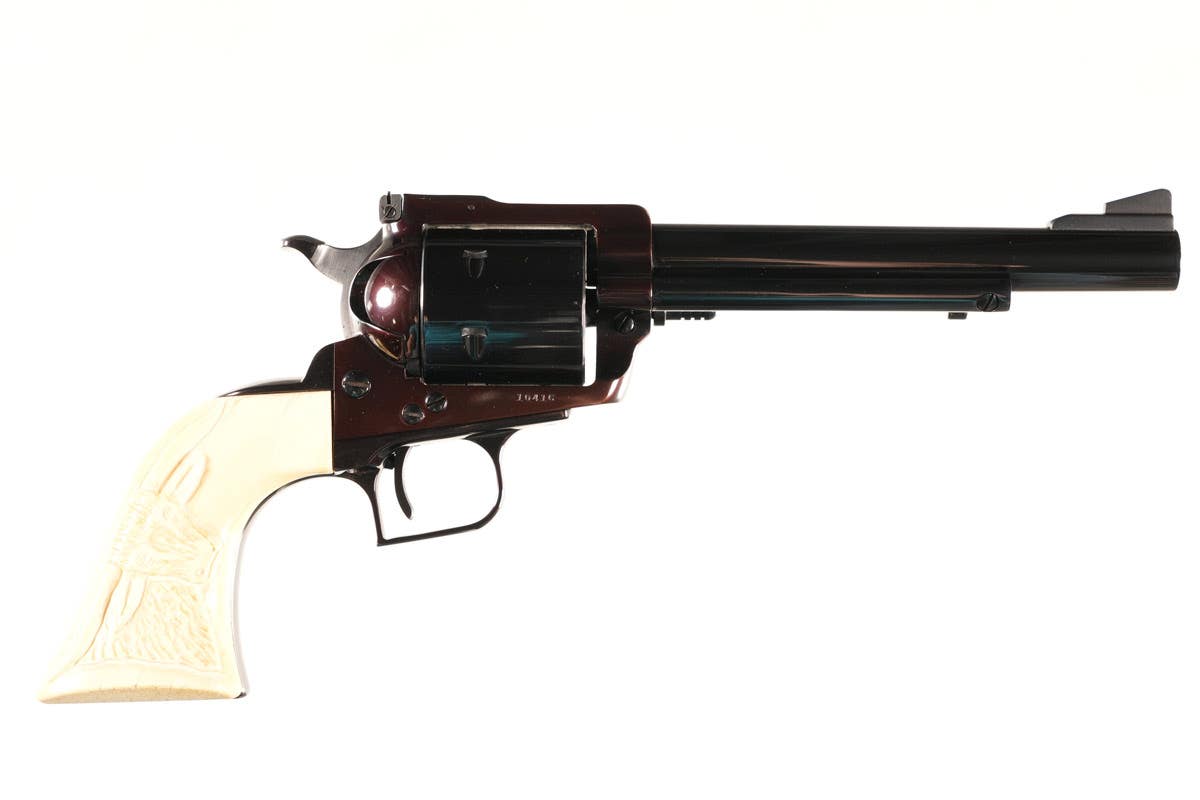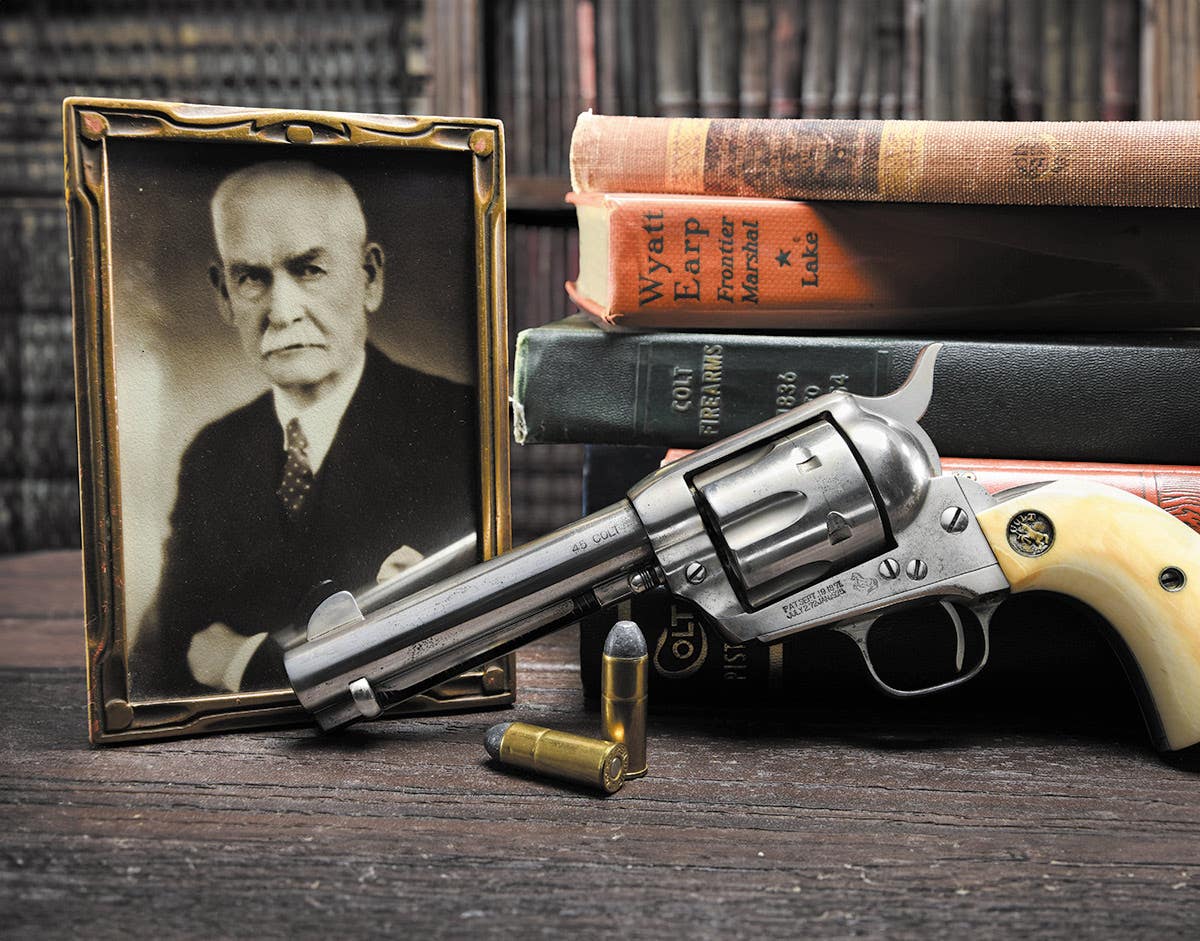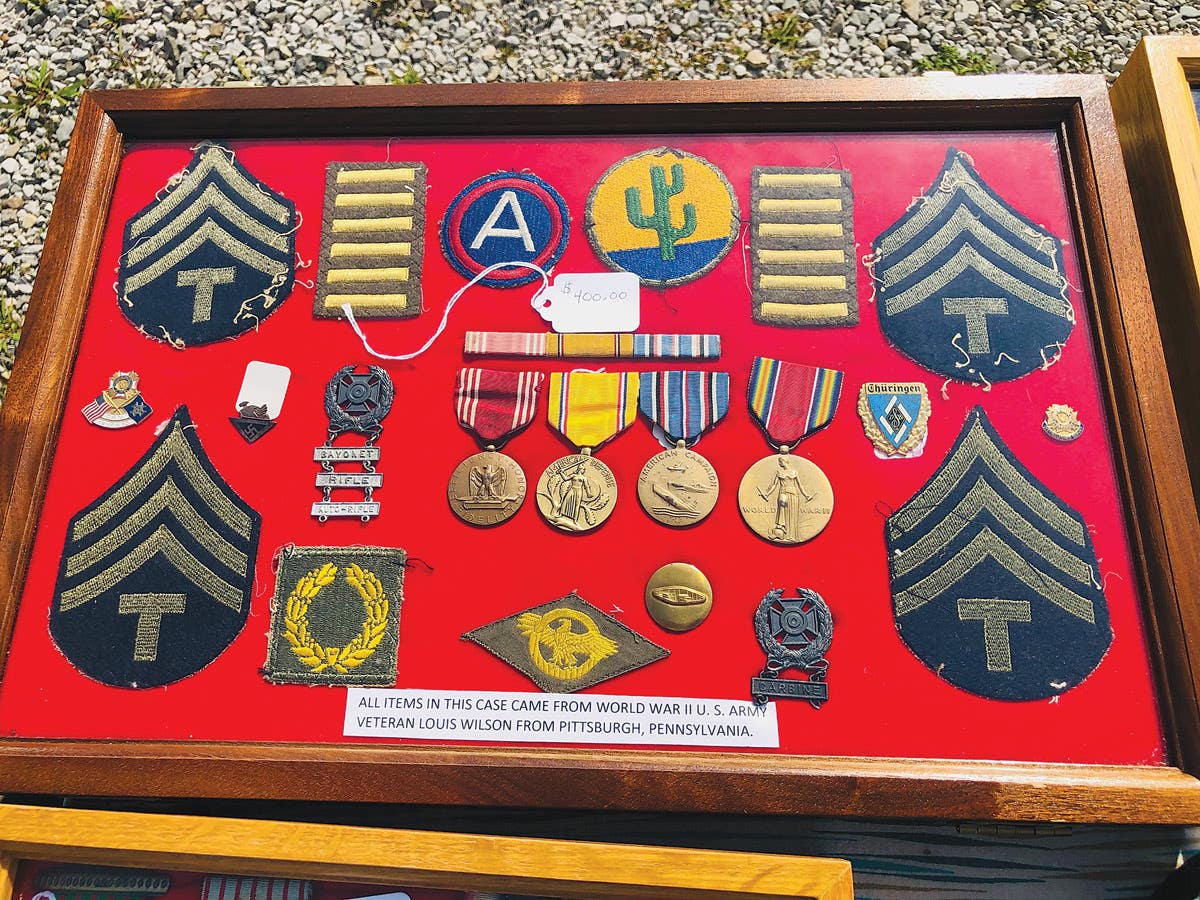Memorabilia, weapons do well at Hermann Historica sale
MUNICH – Once again pleasing results and considerable increases in attractive commission bids were achieved in all segments of Hermann Historica – antiquities, arms and armour, arts and crafts, hunting…
MUNICH – Once again pleasing results and considerable increases in attractive commission bids were achieved in all segments of Hermann Historica – antiquities, arms and armour, arts and crafts, hunting collectibles and objects from history and military history – during this year's spring sale. A total of approximately 6,800 collectors' items were offered for bidding from April 23 to May 4.
Antiquities
The assortment of early antique helmets in good condition offered in this auction was well selected and thematically diversified. A very impressive example was an Illyrian bronze helmet from the 6th century BC and a finely chased iron cheek piece, 2nd/3rd century AD. The latter is coated with embossed bronze in relief, shows an eagle motif on the front side and found a new owner for its starting price of 8,000 Euros. For the helmet, however, with its bright green patina and large face opening, 12,000 Euros had to be spent. Another early Illyrian helmet with golden mounting from the 6th/5th century BC that had been introduced at 7,200 Euros achieved a winning bid of 11,500 Euros.
Equally pleasing was the result for a gladius of the Hispaniensis type from the first century AD. The slightly curved, double-edged blade with pronounced mid-rib and a decorated pommel plate made from bronze won more than twice its minimum price of 3,500 Euros and found a new owner for 8,400 Euros.
Arms and armour, arts and crafts
Excellent results were achieved in the sections of hunting collectibles as well as arts and crafts. Just as in previous years, primarily Kunstkammer objects and historical hunting trophies attracted bidders from all over the world. An extraordinarily large narwhal tusk, approximately 2.50 metres in size, with an impressively beautiful structure, was sold for 10,500 Euros. Historical rhinoceros trophies were bid up to 76,000 Euros (starting price 7,000) respectively 61,000 Euros (32,000).
A magnificent flask from the Balkans with reliefs, attributed to the time of circa 1500, was offered for bidding with lot number 1449. For the extremely rare flat flask at least 15,000 Euros had to be paid – and it was not sold before reaching the sum of 17,500 Euros. Another object of rarity was a bone-inlaid, sensationally crafted hunting and sporting crossbow from the workshop of Johann Gottfried Hänisch in Dresden, first quarter of the 18th century, with a minimum price of 12,500 Euros that was realised.
In this segment of the auction, the interest in beautiful edged weapons in good condition was consistently great. An outstanding example was an Italian falchion with a pommel shaped like a bird's head and remnants of the fire-gilding on the hilt, from circa 1560, at a starting price of 8,500 Euros. With the proven provenance of the Boissonnas Collection and in untouched original condition, 10,000 Euros were offered for this high-quality weapon. Equally sought after were swords from a princely armoury. With finely chiselled and openwork iron hilt, an Italian edged weapon, dating from circa 1560/70, was introduced at 7,200 Euros and sold for 7,400 Euros. A silver-inlaid German campaign sword from 1630/40 with the same provenance was offered for bidding and was sold for its starting price of 7,200 Euros.
Orient and Asia
Just as in previous years, the constantly growing interest in luxuriously designed oriental weapons remained unbroken in this 64th auction. In particular, a gold-inlaid kard set with diamonds and gems from the 19th century caught the eye of collectors. With an estimate of 5,000 Euros, this extraordinarily finely crafted weapon was worth 10,500 Euros to an art enthusiast.
Objects from history and military history
The first day of the militaria auctions was marked by the Russian double-headed eagle. The interest in high-quality objects from the tsaristic period remained unabated. Lot number 4511, a significant Russian flintlock gun from Tula, dated 1747 and ascribed to the master Ilya Salishev, was put up for auction at 54,000 Euros. The elaborately crafted weapon, with silver-inlaid floral decorations and trophies on top of the barrel, was sold for 60,000 Euros. Among the numerous orders and decorations, one especially rare and accordingly valuable Russian Order of St. George from the mid-19th century stood out. The rare, white enamelled piece was offered for bidding at 15,000 Euros. Even in advance of the auction, it attracted vivid interest, and was, accompanied by lively participation in the audience and on the telephones, finally sold for 50,000 Euros.
Just as evident was the demand for a golden bracelet with a miniature portrait of Lieutenant General Georgy Arsenievitch Emmanuel (1775 – 1837) from the first half of the 19th century. As soon as it was called up, the bids for this piece of jewellery from his personal possessions shot up from 3,000 Euros to 27,000 Euros.
The winning bid for an important Fabergé cigarette case made from massive gold was also impressive. The farewell gift from officers of the Life Guard Ismailovsky Regiment to its Colonel Alexander Alexandrovich Richter (1863–1915) was manufactured in Russia in circa 1910, and is ascribed to the master Henrik Wigström. 19,500 Euros, at a starting price of 7,500 Euros, had to be paid for this precious gold work. 16,500 Euros were achieved for a beautiful gouache work by Franz Roubaud (1856–1928). The coloured depiction of a resting Cossack had been put up for auction at 7,000 Euros. “The vivid interest in selected Russian collectors' items of high quality has remained unbroken for years,” said Thomas Rief, general manager and co-owner of Hermann Historica, “following a phase of consolidation on the market, the prices now have taken hold at a high level.”
An important honour dagger of Count Felix von Luckner (1881–1966), the so-called “Sea Devil”, from the Luckner Society, Düsseldorf, patterned after the dagger for officers of the Imperial German navy, could be sold for 32,000 Euros. This preciously crafted collectors’ item, decorated with the von Luckner's family coat of arms, had been put up for auction at 10,000 Euros.
The demand for memorabilia from the Bavarian royal house remained unwavering as well. The presentation brooch of King Ludwig II of Bavaria (1845–1886) was offered for sale. The blue medallion, featuring a golden mirror monogram and set with approximately 60 rose-cut diamonds, was, considering the period, an extremely expensive present. Even the king gave such precious objects only to his closest personal confidants. Put up for auction at 10,000 Euros, this unique precious item was sold for 16,000 Euros.
Fine antique and modern firearms
This spring collectors of antique firearms once again were offered an exclusive assortment of high-quality lots. From a wheellock rifle from Cieszyn, circa 1650, elaborately decorated with mother-of-pearl and bone inlays, that was sold for its estimate of 15,000 Euros, and a Silesian flintlock rifle, circa 1700, with typical, carved full stock, that was bid up from 5,800 Euros to 9,500 Euros, to a German boar carbine made from finely grained thuja wood that had been manufactured in the workshop of Peter Rosenberg in circa 1700, and that now could be sold for 8,800 Euros, introduced at 3,500 Euros.
The much-noticed top items among the modern action firearms were highly sought after. An extremely rare Borchardt C 93, manufactured by Loewe, circa 1895, in 7.65 calibre at a starting price of 7,000 Euros, found a new owner for 17,000 Euros after only a few bid increments. Yet 13,500 Euros had to be paid for a Parabellum pistol carbine 1902 with detachable stock and in 7.65 calibre in near mint overall condition that had been put up for auction at 9,000 Euros. For a Mauser scope rifle 98 k in 8 x 57 calibre that had been estimated at 3,500 Euros, a hammer price of 7,200 Euros was realised.
The winning bids of all sold lots can be found online on www.herman-historica.com. All prices are net prices and are to be understood plus 23 percent surcharge. Unsold objects can still be purchased.
All pictures: Copyright Hermann Historica oHG 2012
YOU MAY ALSO BE INTERESTED IN:
- *Military Trader Magazine
- *Standard Catalog of Military Firearms
- *Military Vehicles Magazine
- *Standard Catalog of U.S. Military Vehicles
MORE RESOURCES FOR COLLECTORS







